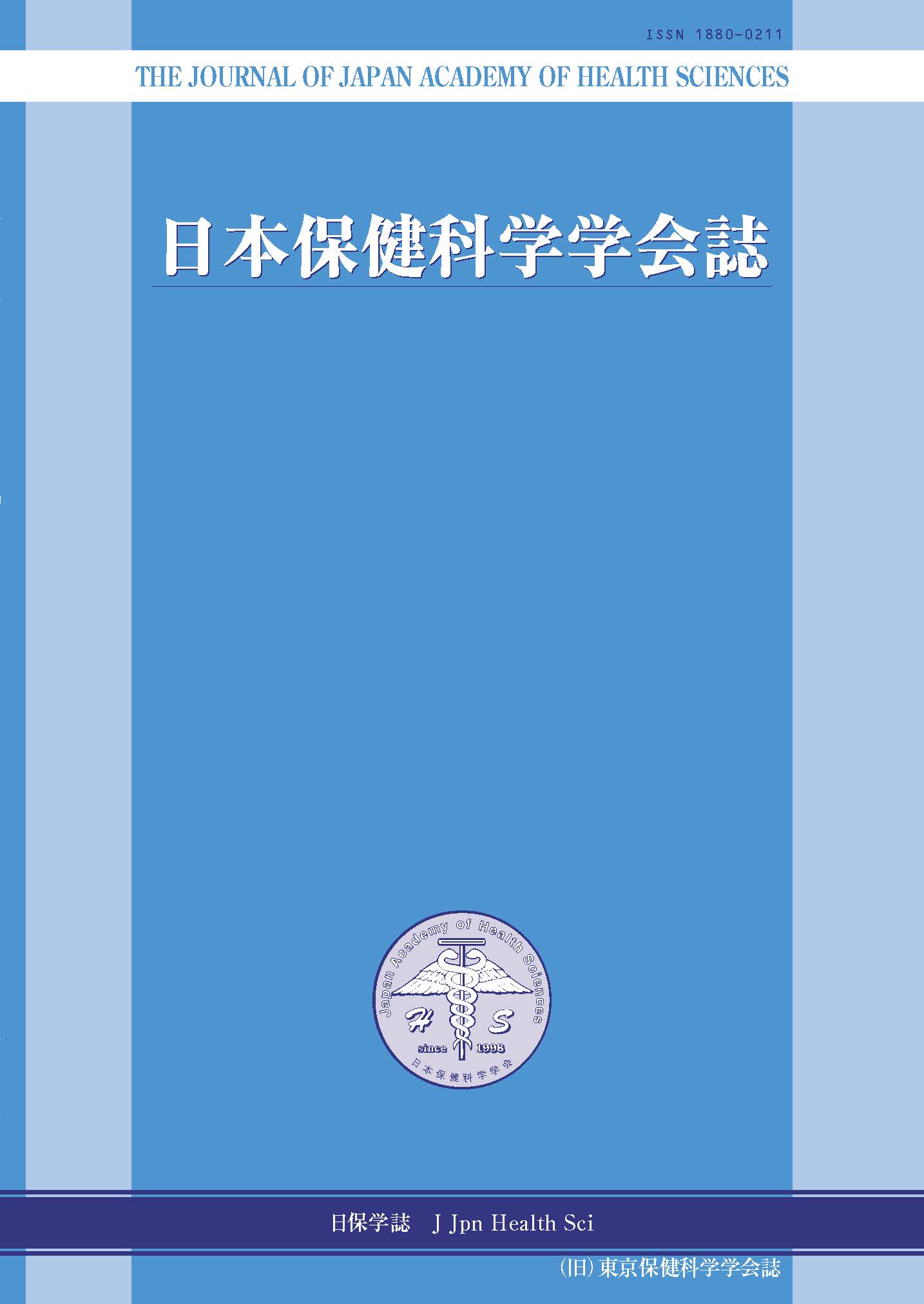All issues

Volume 23, Issue 2
Displaying 1-5 of 5 articles from this issue
- |<
- <
- 1
- >
- >|
-
2020Volume 23Issue 2 Pages 48-
Published: 2020
Released on J-STAGE: March 16, 2022
JOURNAL FREE ACCESSDownload PDF (559K) -
Haruyuki Ohta, Keisuke Saitou, Kazuhiro Harada, Makoto Kyogoku2020Volume 23Issue 2 Pages 51-59
Published: 2020
Released on J-STAGE: March 16, 2022
JOURNAL FREE ACCESS[Purpose] Based on the Pain Disability Assessment Scale (PDAS), this study modified a factorial structure model of the PDAS for patients with chronic pain in the multidisciplinary treatment. [Participants and Methods] Among patients who consulted a chronic pain outpatient department, an initial evaluation of PDAS was possible in 237 cases. Using data obtained from PDAS at the initial diagnosis, we examined the distribution of each item and calculated the item score multiple lines coefficient of correlation and calculated the item response theory, exploratory factor analysis, confirmatory factor analysis (CFA), coefficient of reliability, and examined them. [Results] It was found that the potential formation comprised second-order 3-factor model with 13 items. The goodness of fit in CFA met a statistical permission standard (Compressive Fit Index = 0.979, Tucker-Levis Index = 0.974, Root Mean Square Error of Approximation= 0.076). [Conclusion] The model based on the PDAS showed high internal consistency and adequate structural validity. The 13 items can be appropriate to evaluate the pain disabilities of patients with chronic pain in the multidisciplinary treatment specimen.View full abstractDownload PDF (826K) -
Ryu Kobayashi, Megumi Nomura, Norikazu Kobayashi2020Volume 23Issue 2 Pages 60-74
Published: 2020
Released on J-STAGE: March 16, 2022
JOURNAL FREE ACCESSThe purpose of this study is to conduct a systematic review of factors associated with the maintenance and decline of IADL among community-dwelling elderly people in Japan to obtain an integrated view. We extracted literatures which examined factors associated with the maintenance and decline of IADL among community-dwelling elderly people using “Ichushi-Web” and “MEDLINE” and each factor was categorized according to those similarity. As a result, 45 factors were extracted from 35 literatures, and 9 categories such as demographics, health status, physical and cognitive functions, psychological aspects, activities, environment, lifestyle, social participation and experiences of adulthood were generated. This review will help to develop local policies and programs to maintain IADL of community-dwelling elderly people.View full abstractDownload PDF (854K) -
Masataka Shikata, Hiroyuki Notoh, Kazuya Shinohara, Kenji Yabuwaki, Yo ...2020Volume 23Issue 2 Pages 75-87
Published: 2020
Released on J-STAGE: March 16, 2022
JOURNAL FREE ACCESSIntroduction: Participating in meaningful activities that reflect one’s identity promotes the wellbeing of elderly people. This study aimed to prepare a questionnaire draft to evaluate occupational identity of the elderly and to examine the content and face validity of the questionnaire.
Methods: First, we generated questionnaire items to evaluate the occupational identity of elderly people. Second, a content validity study was conducted with experts, using three rounds of the Delphi method. Lastly, the face validity study was undertaken by elderly participants, who reported on whether they could understand the questionnaire.
Results: The 50 original questionnaire items were reduced to 21 items with the Delphi method. The items showed item-level content validity index (I-CVI) ranging between 91.7% and 100%, and scale-level CVI with the universal average method (S-CVI/Ave) of 97.4%, which fulfilled the consensus criteria. In the result of the face validity, although none of the items were checked as “Difficult to understand,” there were four items checked as “Difficult to answer.” Accordingly, only one item was corrected.
Conclusion: Results suggest that this assessment possesses content and face validity in a sample of elderly people. The questionnaire is likely to allow occupational therapists to gain information about elderly peoples’ occupational identity.View full abstractDownload PDF (799K) -
Aki Yokoi, Yoshikazu Ishii2020Volume 23Issue 2 Pages 88-98
Published: 2020
Released on J-STAGE: March 16, 2022
JOURNAL FREE ACCESSThe purpose of this study was to clarify the factors related to the competencies of occupational therapists engaged with community-based rehabilitation (CBR) of the elderly adults. A postal survey was sent to 1,200 occupational therapists, who were working in CBR and belong to Japanese association of occupational therapists, using the “Self-assessment scale of the competencies of occupational therapists engaged with community-dwelling elderly adults with disabilities (five factors with 30 items)”. In an analysis of valid responses obtained from 410 occupational therapists “Engaged in community as a professional” was found to be the most difficult factor of the five. Furthermore, their competencies were significantly associated with both the presence or absence of research activities and degree of interest in competencies. On the other hand, there was no significant relationship between the number of years of their clinical experience and the competencies of occupational therapists. From the above, to improve quality of competencies, it is important to be interested in competencies, reflect on one’s own practices, and connect clinical questions to research activities. Therefore, we think that one of the problems is to establish a system to support the research activities of occupational therapists in life.View full abstractDownload PDF (806K)
- |<
- <
- 1
- >
- >|